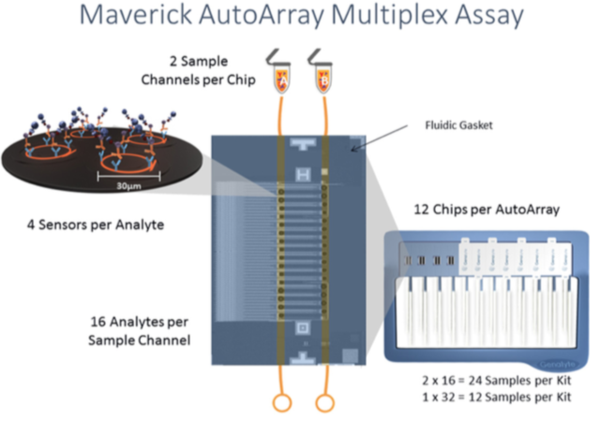Silicon Photonic Sensors for Multiplex Immunoassays
A novel way of analyzing the interaction between biomolecules.

Genalyte Inc. has developed an innovative system for multiplexed label-free detection of protein binding events by measuring wavelength resonance shifts caused by surface binding on silicon photonic sensors. Genalyte uses our sciFLEXARRAYER technology to print their ring-based biosensors.
Genalyte, Inc., a San Diego, CA-based life sciences company, uses silicon photonics to develop next-generation multiplexing technologies. Their Maverick Detection System performs multiplexed detection of protein binding events by measuring wavelength resonance shifts caused by surface binding on silicon photonic sensors – with results in only 15 minutes. The label-free technology eliminates the need for fluorescent, luminescent, or radioactive labels used in other immunoassay formats.
“We use a tiny chip and the sensors on this chip need to be spotted precisely. SCIENION provides the visualization and the software to recognize the orientation and position of the chip and enables us to precisely spot on every single sensor in an efficient and cost-effective way. SCIENION has been a great partner and helped us all along the way for setting up precision loading of our chips and designing a software that uniquely supports our system.”
Martin Gleeson, CSO of Genalyte Inc.

The key to the Maverick Detection System is its patented silicon chip containing arrays of microring sensors that can simultaneously analyze multiple proteins from a single sample. Each microring sensor on the chip is coated with a distinct antigen or antibody and for printing procedures, Genalyte uses our sciFLEXARRAYER dispensers.